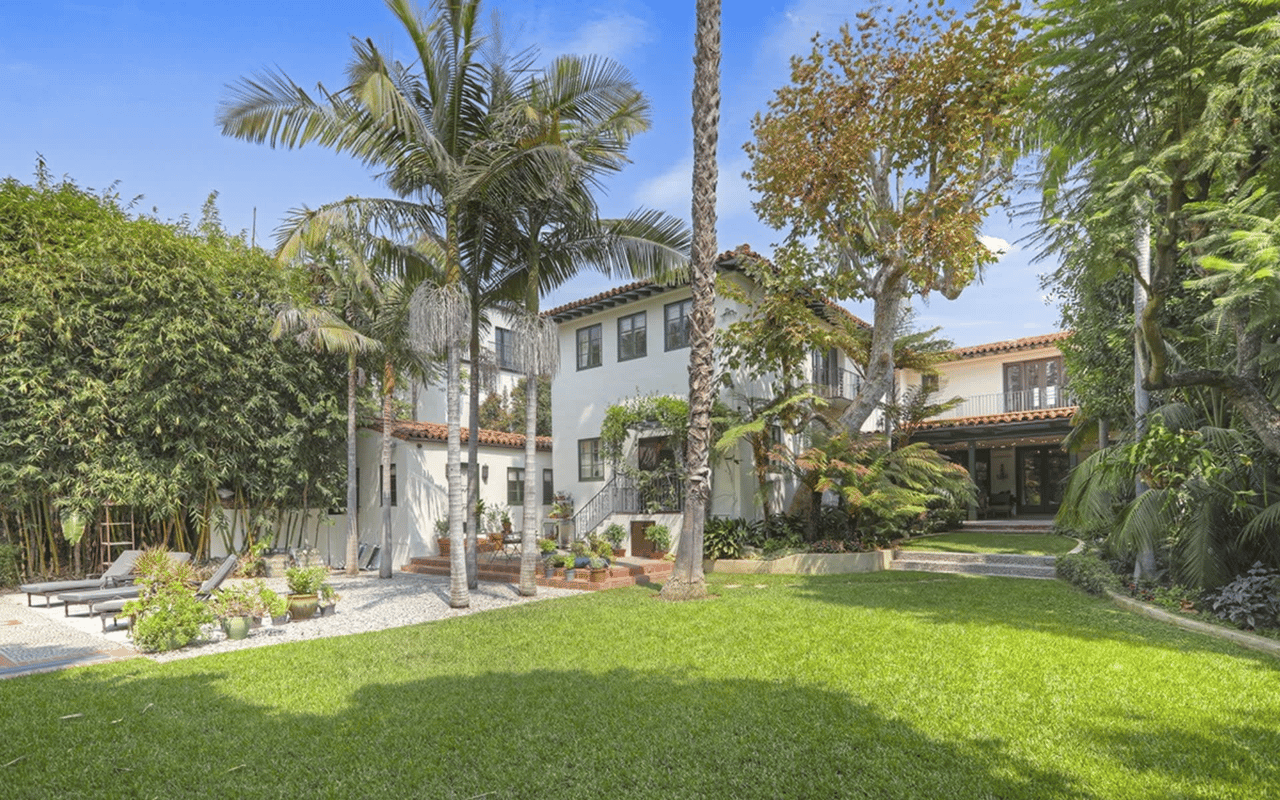After a tumultuous summer for real estate, autumn is nearly here. As of mid-September, the benchmark 30-year fixed-rate mortgage average is hovering just north of 6 percent, and skyrocketing home prices are finally starting to drop, albeit slowly. Housing inventory remains tight, too. These indicators spell both good and bad news for fall homebuyers and sellers.
Wondering which directions the housing market will head in as the leaves start to change? Curious where interest rates will land? Worried about a potential crash? Read on for fall housing predictions from the pros.
Will the Housing Market Stay Hot?
The market seems to be cooling dramatically, and Rick Sharga, executive vice president of market intelligence for ATTOM Data Solutions, says the signs are undeniable. Case in point: July marked the seventh consecutive month in which existing home sales were lower than the month prior — down 20.2 percent year-over-year and 5.9 percent from the previous month, according to the most recent National Association of Realtors data.
“In July, the annualized rate of home sales dropped below 5 million homes, which represents a decline of over 1 million home sales compared to 2021,” Sharga says. “I expect both new and existing home sales will probably continue to decelerate through the fall and winter months, with home price appreciation likely to end 2022 in the low single digits — likely in the 2 to 3 percent range.”
He notes that this decline is almost entirely due to the impact that increased mortgage rates have had on affordability. Purchase loan applications are running about 23 percent lower than they were at this time a year ago, according to the Mortgage Bankers Association.
Kenon Chen, executive vice president of corporate strategy at Clear Capital, agrees with Sharga’s assessment. “Clear Capital’s August Home Data Index Market Report shows almost a 5 percent slowdown in home price appreciation compared to July,” he says. “Year-over-year appreciation also fell to 16.7 percent, from 20 percent in July. And inventory has risen steeply, with the number of active listings now around 550,000, which we haven’t seen since July of 2020. But even with the price slowdown, double-digit year-over-year home price appreciation coupled with continued high mortgage rates could continue to cool down the market.”
Consider, as well, that further price corrections on homes for sale may be coming. Fitch Ratings’ 2nd quarter 2022 Sustainable Home Price Report estimates that home prices in 89 percent of the country’s major metropolitan areas are overvalued. If a major lowering of prices does come to pass this fall, it could allow the many millennial homebuyers who have been priced out of the market to finally get a chance at homeownership.
Are We Headed Toward a Housing Bubble?
A housing bubble is often described as an unsustainable span of home price growth caused by factors like speculative buying and loose underwriting. Of course, the word “bubble” suggests an inevitable “pop.” Is that what the current market is destined for?
“The housing market today is not driven by loose lending standards, sub-prime mortgages or homeowners who are highly leveraged,” says Odeta Kushi, deputy chief economist at First American. “The house price appreciation in today’s housing market is supported by the fundamentals and characterized by a shortage of supply relative to demand. That demand has primarily been driven by millennial first-time buyers aging into their prime home-buying years, rather than fix-and-flip investors.”
In other words, there is no housing bubble.
Ralph DiBugnara, president of Home Qualified, echoes those thoughts. “This is not a housing bubble,” he says. “Yes, there has been a huge demand, but banking regulations post-market-crash are much more restrictive, and have stayed that way. So today’s buyers are more qualified to purchase and sustain their investment, which means fewer foreclosures. Also, the supply of homes for sale could take years to get to normal levels. So even if there is a selloff, it won’t be a fire sale at discount prices.”
Count Chen among the doubtful, too. “At a fundamental level, the labor market remains strong, loan delinquency is historically low and supply is only 57 percent of where we were at the beginning of 2019 — without a major economic shock, a bubble still seems unlikely,” he says.
Who Bought Houses in 2021?
It’s helpful to take a closer look at who purchased properties last year, which may provide clues as to which generations may buy a home this fall and beyond. Here’s what we know, based on National Association of Realtors data:
| HOMEBUYER GENERATION | % OF 2021 BUYERS | MEDIAN AGE IN GROUP |
|---|---|---|
| Gen Z: 21 years and younger | 2 | 21 |
| Younger Gen Y/Millennials: 22 to 30 years | 14 | 27 |
| Older Gen Y/Millennials: 31 to 40 years | 23 | 35 |
| Gen X: 41 to 55 years | 24 | 48 |
| Younger Boomers: 56 to 65 years | 18 | 61 |
| Older Boomers: 66 to 74 years | 14 | 69 |
| Silent Generation: 75 to 95 years | 5 | 78 |
Current Supply and Demand
Housing demand in our current cycle has been driven largely by demographics. “We have the largest cohort in U.S. history of young adults between the ages of 25 and 34 — prime age for household formation and homebuying — and this group will continue to propel demand for the next two to three years,” says Sharga. “However, supply has failed to keep up with this demand. Even with recent increases, inventory is at about 3.5 months. That’s well below the six-month supply considered normal.”
Interestingly, the increase in inventory levels is only partly due to a higher number of properties being listed for sale. A lot of it is because properties are taking longer to sell once they are listed. Many buyers are holding off in the hopes that prices — or mortgage rates — will drop further.
In addition, the pandemic uncertainty that has roiled the real estate market over the past couple of years still lingers. Some homeowners want to stay put due to economic concerns, knowing they might struggle to find a new place. And some don’t want to give up their locked-in low rates by selling. “Homeowners with sub–4 percent mortgage rates are opting to stay put rather than buy a more expensive home with a 6 percent mortgage rate,” Sharga says.
Mark J. Schmidt, a real estate agent with RE/MAX Country in Milltown, New Jersey, is hopeful that supply will continue to tick up as autumn progresses. “Inventory levels typically start picking up as we come out of Labor Day, so I expect there to be more homes on the market in the fall than we have seen earlier this year,” he says. “What remains to be seen, however, is how many buyers are still going to be in the market.”
Borrowers Are Still More Likely to Pay Off Their Mortgages
When the housing sector crashed back in 2008, the reasons were multifold: foreclosures, defaults, predatory lending, irresponsible speculation in the market. Thankfully, today’s mortgage borrowers are more responsible and cognizant of the risks that come with incurring mortgage debt. Tighter lending standards and better fiscal discipline have resulted in buyers steering clear of homes they can’t afford. And a strong job market means borrowers can keep making their payments.“Foreclosure activity today is at only about 50 percent of where it was before the pandemic, and mortgage delinquency rates are lower than usual as well. There is no new foreclosure crisis anywhere on the horizon,” says Sharga. “It’s also unlikely that we will see a meaningful increase in the number of underwater borrowers. Homeowners have a record amount of equity today — nearly $28 trillion — and a modest decline in home prices won’t affect very many of them.”
Warning Signs of a Market Crash
Experts concur that we are not in a housing bubble currently, nor is a housing crash on the horizon. Still, it’s good to know the red flags that signal a potential market crash, including:
- Increasing loan-to-income levels
- Overpriced properties that outpace affordability, inflation and economic fundamentals
- Higher mortgage rates
- Lower economic growth
- Escalating mortgage balances
- Climbing subprime mortgage loan numbers
“Barring some new, unforeseen global catastrophe or a disastrous recession, there is almost no chance we will see a housing market crash in fall 2022,” Sharga says.
Bottom Line
Taking a big-picture look, this autumn is fairly easy to predict, with no radical changes expected or alarming market indicators present. “The fall will likely bring with it more moderation, with house prices adjusting to the not-so-new reality of higher mortgage rates,” says Kushi.Schmidt believes the market will continue to lean toward sellers this season, although it won’t be as hot as what we’ve experienced over the last two years. “With interest rates going up, we have fewer buyers in the market, which will cause the market to cool slightly,” he says.



